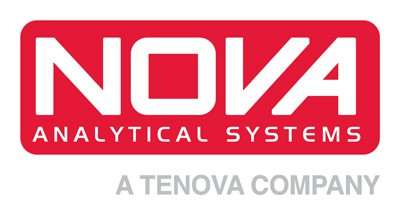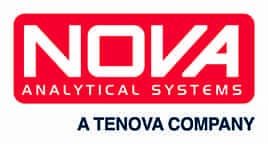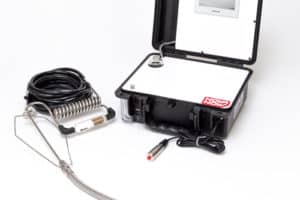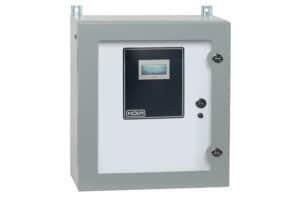Portable Engine Exhaust Analyzers
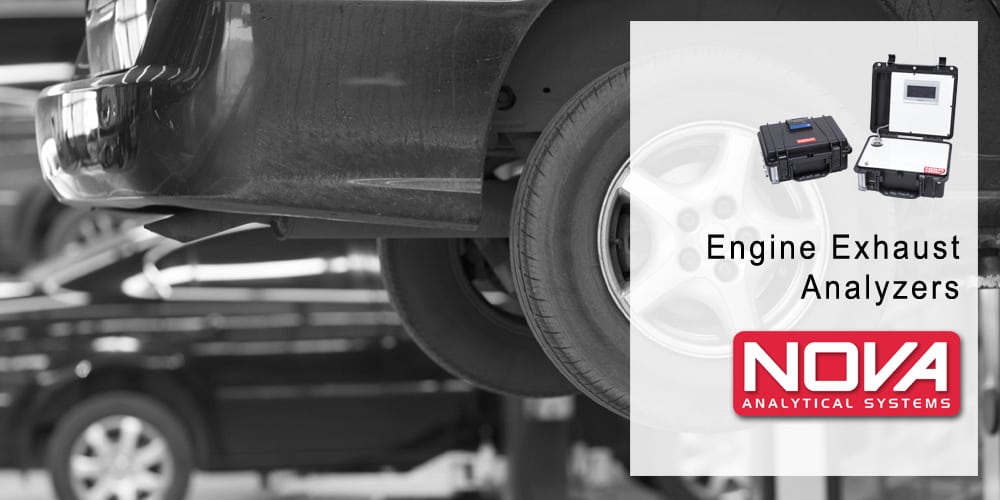
Portable Engine Exhaust Analyzer Catalog
What Does an Exhaust Gas Analyzer Measure?
Analysis of exhaust gas from combustion engines can help evaluate engine performance and diagnose problems. A Nova portable engine exhaust gas analyzer can measure Oxygen (O2), Carbon Monoxide (CO), Carbon Dioxide (CO2), Nitrogen Oxide (NO), Nitrogen Dioxide (NO2), and Hydrocarbons (HC’s).
Oxygen: Filtered ambient air enters the engine and forms part of he fuel mixture. Ambient air contains 20.9% O2. Ideally, in most engine types, this O2 should be consumed as the fuel is burned. Oxygen levels analyzed at the tailpipe indicate unburned O2, and represent a lean air/fuel mixture.
Hydrocarbons: the HC’s channel is calibrated as hexane or propane depending on the vehicle type the analyzer is to be used on. The measurement itself represents unburned fuel and is measured in the ppm (parts per million). Modern automobiles in good running order frequently show 10ppm or less when evaluated with an automotive gas analyzer. Trucks and forklifts may have higher levels due to fuel type or engine style.
Carbon Dioxide: the level of CO2 is a product of combustion and represents the amount of fully burned fuel. Therefore, a higher CO2 level indicates a higher engine efficiency. Many fuel injection engines will show approximately 15% CO2.
Carbon Monoxide: Partially burned fuel results in CO. High CO levels indicate a ‘rich’ fuel mixture. A perfect fuel mixture meters in exactly enough fuel to consume all of the O2 entering the engine. A perfect ratio is not sustainable in real-life operation. A fuel mixture that contains excess fuel is usually referred to as a ‘rich’ condition. A ‘lean’ condition refers to an excess of O2. CO may be measured in percent or ppm amounts depending on type / age of engine.
NOx: NOx generally refers to NO and NO2 (nitric oxide and nitrogen dioxide). This measurement is in ppm and represents the combustion products of burning nitrogen. This occurs at the higher engine temperatures associated with a lean fuel mixture or being under load. Of the NOx output of a typical engine, the NO component will usually make up the highest proportion. Diesel engines are generally associated with higher NOx and particulate emissions.
Nova can provide reasonably-priced portable gas analyzers for engine exhaust analysis. The following gas analyses are available:
- Oxygen (O2)
- Carbon Monoxide (CO) (in percent or ppm)
- Carbon Dioxide (CO2)
- Nitrogen Oxide (NO)
- Nitrogen Dioxide (NO2)
- Hydrocarbons (calibrated as hexane or propane)
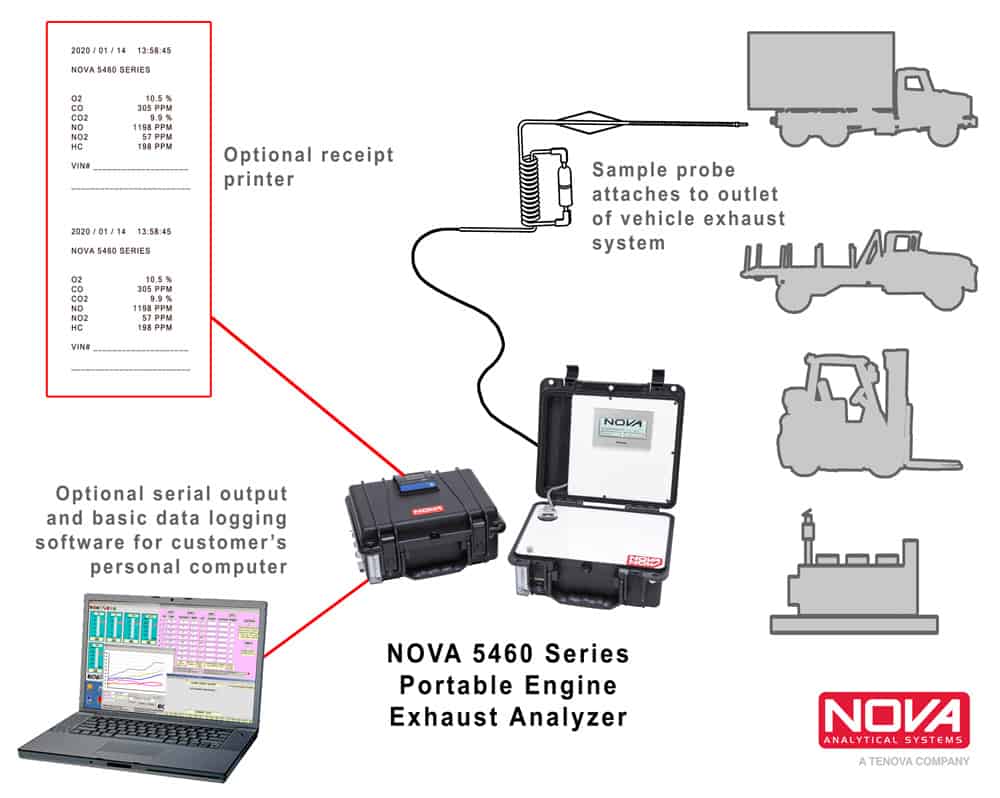
The Nova analyzer can be used for checking engine exhaust emissions from diesel, gasoline, propane, or natural gas powered 2 and 4 cycle engines, and is often used in automotive exhaust gas analyzer applications. This includes small engines, cars, trucks, fork lift trucks, tractors, etc.
Nova can do PPM CO measurement. It is worth noting that engine exhaust analyzers traditionally measure CO by infrared detector in a range of 0-10.00%. This range is most relevant to tuning older engines that that have normally high CO output. However, many modern engines have CO output in the ppm range. Low CO ppm levels may not even be visible to a detector that is optimized for percent levels.
Therefore, the capability of Nova engine exhaust analyzers to measure 0-10,000ppm CO is frequently an attractive feature. This capability is even more relevant if the user is researching the small effects of fuel additives, engine modifications, and other mechanical / chemical inputs to already efficient engine designs. As a related side note – we see many universities, schools, governmental departments, and engine labs express interest in the Nova 5460 Series.
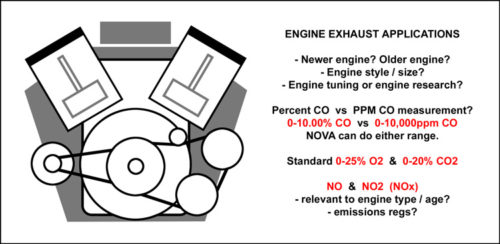
Exhaust Gas Analyzer Features
This analyzer comes in a sturdy suitcase-type enclosure which is weather-proof when closed. It can be used in the shop or taken on the road. It has an internal rechargeable battery, or it can be powered by the 12VDC power outlet on most cars.
The gas extraction probe is included with the analyzer. We sometimes call this the “cool handle” probe because it has a coiled section of stainless steel tubing that is effective in dissipating the heat before it continues on to the analyzer. The probe handle also has a built-in filter that removes soot and oil vapors from the sample gas. The probe has a retainer clip that is used to anchor it in the vehicle exhaust pipe. A flexible tip or a bendable straight tip can be provided with the probe handle.
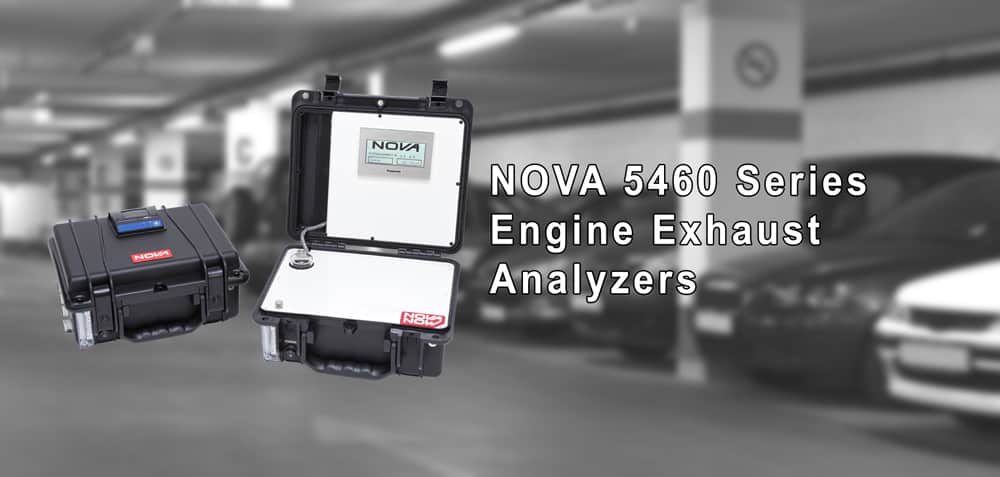
An optional printer is available which can be activated using a corded remote-control switch. This allows the operator to print a receipt containing all gas readings and VIN number without leaving the engine.
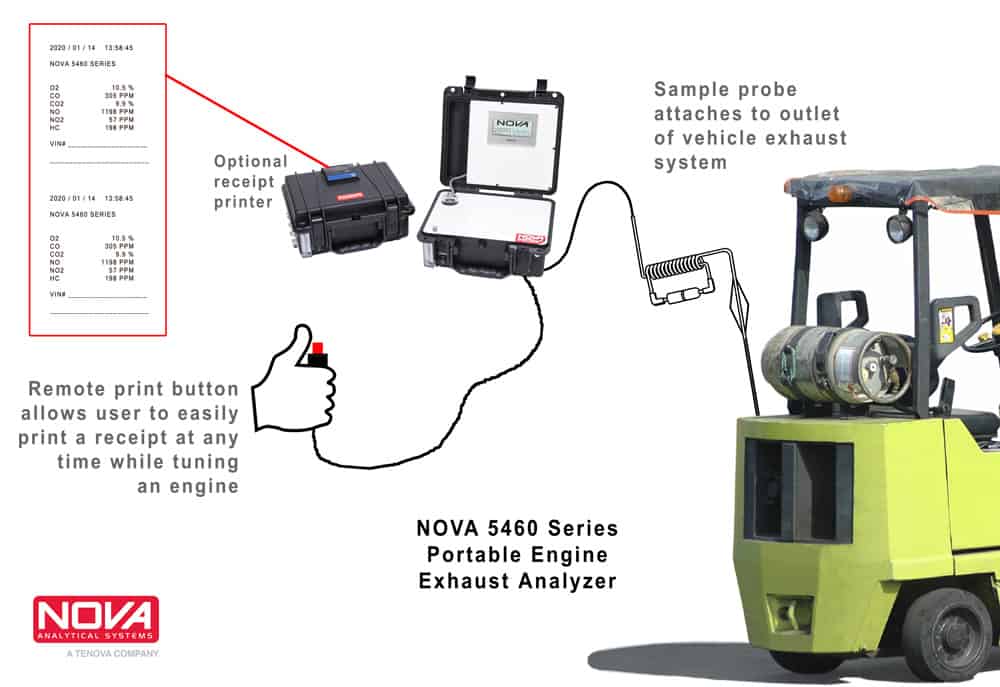
This analyzer is also frequently supplied with 4-20mA recorder output for each gas reading. An optional digital serial output package is available with computer software. The software allows the user to view and log the analyzer output data on a personal computer.
Nova 5460 Series Engine Exhaust Analyzers
See also Driving Clean and Engine Exhaust Analysis Part 1 and Part 2 from Nova’s blog for additional information on the engine exhaust analyzers.
If you are interested in engine exhaust analysis and need more information on this instrument, request a quote or view our product catalog.
Stationary Engine Exhaust Analysis
It is quite common to see landfill or biogas sites equipped with stationary engines being fueled wholly or partially by the produced gas. The produced gas needs to be cleaned of contaminants to avoid fouling the engine. A scrubber may be installed on the site for this purpose. A biogas analyzer may be used to evaluate the efficiency of the scrubber equipment. See this page for that type of equipment.
The cleaned landfill gas or biogas is considered as an input of the engine. The output of the engine will be mechanical power, heat, and the gas exiting the exhaust stack. After combustion, this gas has a much different composition than it did as an input.
Some sites may require analysis of the engine exhaust for diagnostic reasons or emissions reporting. The models mentioned above may be used for this purpose. On most engines, the extraction probe may be mounted on the exhaust stack and include an inverted pre-filter for light particulate removal. Multiple engines may be sampled on a time-cycled basis using an auto-sequencer.

- 7200 Continuous Flue Gas Analyzer System for Clean Gas
- 7240 Heated Probe & Filter System
If you are interested in engine exhaust analysis, our selection of 5-gas analyzers, or need more information on this instrument view our product catalog or contact our Sales team for more information.
Or to provide us with more information about your application, please complete our Application Questionnaire and our Sales team will follow up with you promptly.
